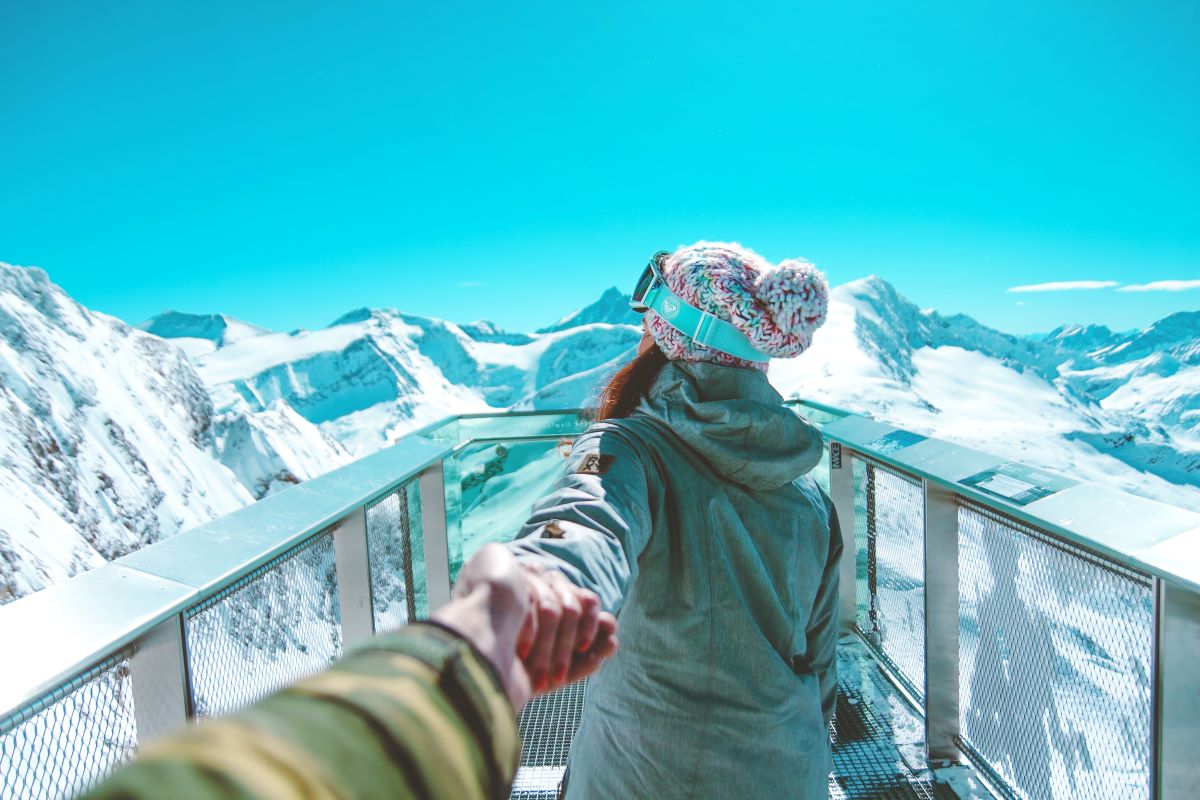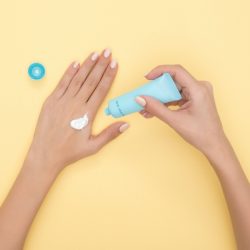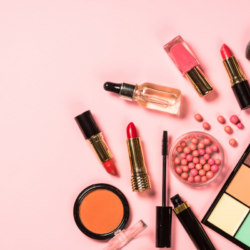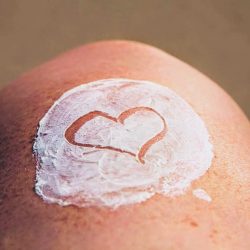Sunprotection is a must-have during your stay at altitude. Sun and holidays never go together, even when you’re off to the mountains forwinter sports and activities. So if you’re going to sunbathe in a place where ice and wind reign supreme, it’s best to be well equipped: sun cream, sunglasses, hats and gloves. Of course, you also need to make sure your tan is a success. So how do you choose the right sun protection for winter? Find out in this article.
Sun creams: some good advice for winter skiing holidays
A sunburn is never the best memory you can hope for when you go on holiday in the mountains. Yes, you should know that the sun also makes its presence felt at altitude. And it’s even more dangerous in these high places than it is on the beach. So you need to be well equipped.
Suncreamis essential during winter holidays. It protects your skin from the sun’s UV rays. But how do you choose a cream that is effective against the damage that sunburn can cause?
The easiest way is to rely on the protection factor of the cream. The higher the SPF, the better. If a cream has an SPF (sun protection factor) of 30, that means protection against 30 times the dose of UV rays that the skin can withstand before burning. So, to protect your skin properly, opt for Soin et Nature products likeAVENE Soleil Sport Fluid SPF50 100ml.
Are UV rays at altitude more dangerous for the skin?
Exposure to ultraviolet (UV) rays at altitude is a subject that deserves special attention, particularly because of its increased effects on the skin and the increased risks associated with this exposure.
The effects of UV on the skin
UV rays, mainly UVA and UVB, can have a significant impact on the health of your skin. UVA rays are mainly responsible for premature ageing of the skin, causing wrinkles and age spots. UVB rays are the main cause of sunburn and can contribute to the development of skin cancer.
Prolonged exposure without adequate protection can lead to :
- Sunburn, which can vary from mild to severe, leading to redness, pain and, in extreme cases, blistering.
- Alteration of the DNA of skin cells, increasing the risk of mutations and cancer.
- Accelerated skin ageing, characterised by wrinkles, loss of elasticity and pigmentation spots.
- Degradation of collagen, essential to the structure and health of the skin.
Why altitude increases the risks
Altitude plays a major role in the intensity of UV rays for several reasons:
- Less atmosphere to absorb UV rays: As you climb higher, the atmosphere becomes thinner, reducing its ability to filter UV rays. This means that at high altitudes, such as in the mountains, UV exposure can be much greater than at sea level.
- UV intensity increases with altitude: For every 1,000 metres of elevation, the intensity of UV rays increases by around 10%. This means that on a day’s skiing, you could be exposed to much higher levels of UV radiation than in your everyday life.
- Reverberation effect of snow: Fresh snow can reflect up to 90% of UV rays, increasing exposure on all exposed parts of the body, including under the chin and nose.
Apply your sun protection correctly for a perfect tan
To make sure you’re well protected from the sun’s rays and have a beautiful tan when you get back from yourwinter skiing holiday, take care not to burn your skin from day one . To do this, you canprepare your skin well in advance of your holiday by using a good quality sun cream , for example. Once the product has been properly applied to your face, take a few minutes every day to go outside and let your skin get used to the sun’s rays.
And of course, once you’re on the slopes, make sure you apply a high SPFsunscreen such as SVR Sun Secure Stick Mineral SPF50 from Soin et Nature.
Protecting your lips and eyes when skiing
Protecting your lips and eyes when skiing is essential to prevent damage caused by the sun, ice and wind, which can be particularly harsh in the mountains. A proper skincare routine and the use of protective accessories are essential to keep your face healthy in these extreme conditions.
Lip protection
- In winter, your lips are constantly exposed to the cold and wind, making them particularly vulnerable. Applying a moisturiser in the evening is an excellent way to nourish and regenerate the delicate skin of your lips overnight.
- During the day, it’s crucial to use a specific product such as ISDIN Protector labial lip balm with SPF 50, which not only provides effective sun protection against UV rays, but also ensures continuous hydration, which is essential in the dry mountain climate.
- Regular application of this balm throughout the day will help prevent dryness, chapping and sunburn, keeping your lips healthy and comfortable throughout your ski holiday.
Eye protection
- The sun’s reflection off the snow can be extremely intense in the mountains, considerably increasing the risk of eye damage. That’s why it’s important to choose the right sunglasses or ski goggles.
- The pair of sunglasses or ski mask must offer complete UV protection. They should wrap completely around your eyes to block not only the rays coming from the front, but also those that can reach your eyes from the sides.
- Mirrored or polarised lenses are particularly recommended. These lenses reduce the glare caused by light reflected off the snow and give a better perception of contrasts, which is essential for safety when skiing. As well as their protective function, they offer improved visual comfort, allowing you to ski in optimum conditions.
For a successful winter skiing holiday, it’s crucial to have a complete set of sun protection equipment, including specific products for the lips and eyes. This will enable you to enjoy your mountain experience to the full, while keeping your skin and eyes healthy and safe. Don’t forget to pack these essentials in your suitcases!
Allergies, sensitive skin and sun creams
The mountains can be a real challenge for people with sensitive skin or allergies. The combination of cold, wind and increased UV exposure can aggravate symptoms and make choosing the right sun protection products even more crucial. Here are some specific tips and product recommendations for those with sensitive skin or allergies.
Specific advice for sensitive and allergic skin
- Avoid products with perfumes and dyes: These substances can irritate the skin or cause allergic reactions. Opt for hypoallergenic formulas.
- Look for products with soothing ingredients: Ingredients such as aloe vera or chamomile are known for their calming properties and can help soothe irritated skin.
- Choose creams with mineral filters: Mineral filters such as zinc oxide or titanium dioxide are less likely to cause allergic reactions than chemical filters.
- Test the product before using it on your face or hands: Apply a small amount of product to an inconspicuous area of your skin and wait 24 hours to check for signs of reaction.
- Moisturise your skin regularly: Use a moisturiser suited to your skin type to strengthen the skin barrier and reduce sensitivity.
Recommended products for sensitive and allergic skin
- Mineral filter-based sun creams: These products are often well tolerated by sensitive skin. They offer protection against UVA and UVB rays without penetrating deep into the skin, which reduces the risk of reactions.
- Hypoallergenic lip balms: The skin on the lips is particularly vulnerable to the cold and the sun. Choose a lip balm with SPF and no artificial fragrances or flavours.
- Certified products for sensitive skin: Look for products that have received certifications or labels attesting to their suitability for sensitive skin, such as ECARF (European Centre for Allergy Research Foundation) certification.
- Specific after-sun products: After a day on the slopes, use an after-sun product designed for sensitive skin to moisturise and soothe the skin.
Myths and facts about the importance of sun protection in the mountains
When it comes to sun protection in the mountains, there are a number of persistent myths. These preconceived ideas, often based on half-truths or popular beliefs, can compromise the effectiveness of your protection against UV rays. Here are some of the most common myths, backed up by scientific facts to help you make the best decisions for your skin.
Myth: “I don’t need sunscreen on a cloudy day.”
-
- Reality: Even on cloudy days, up to 80% of UV rays can penetrate clouds. The reflective effect of snow, which reflects up to 90% of UV rays, increases exposure considerably. So it’s crucial to apply adequate sun protection, whatever the weather.
Myth: “A high SPF protects me all day long.”
-
- Fact: A high sun protection factor (SPF ) doesn’t mean you can spend all day outside without reapplication. Sweat, water and even the rubbing of your clothes can reduce the effectiveness of your sun cream. Reapplication every two hours is recommended, especially after sweating or falling in the snow.
Myth: “Sun protection blocks the synthesis of vitamin D.”
-
- Reality: Although sunscreen reduces sun-induced vitamin D production, it doesn’t block it completely. What’s more, the importance of protecting your skin from long-term UV damage is far more significant. Dietary sources and supplements can compensate for the reduction in vitamin D synthesis.
Myth: “I don’t need sunscreen if I already have a tan.”
-
- Reality: A tan only provides an SPF of around 2 to 4, which is largely insufficient for effective protection. Even with a tan, your skin remains vulnerable to harmful UV rays, particularly at altitude where these rays are more intense.
Myth: “All sun creams are the same”
-
- Reality: There is a wide variety of sun protection products on the market, with significant differences in terms of composition, water resistance, and environmental impact. It’s essential to choose a product that’s suited to your skin type, your activities and that respects the environment.
Myth: “Sun protection is only necessary for the skin.”
-
- Reality: It’s just as important to protect your eyes. UV rays can cause long-term damage, including cataracts. Quality sunglasses or a ski mask with UV protection are essential for complete protection.





